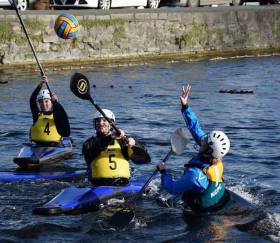Displaying items by tag: National Junior Championships
Kilcock Hosts National Canoe Polo Junior Competition
#Canoeing: Kilcock Canoe Polo Club is hosting the National Junior Competition in the newly re-opened Kilcock Harbour on Sunday, May 14th.
This event will see 120 players aged between 10 and 19 compete, with teams coming from around the country, North and South, together to play this exciting team sport.
Canoe Polo is like Water Polo, but with the added excitement of the players being in boats. Players pass the ball between a team of five players and shoot at the opponents goal suspended over the water. The club operates from the Harbour making this an exciting spectacle for the town.
Kilcock has a history of Canoe Polo, with the club starting in 1998. The club caters for all ages from six to over 60 and has complete beginners looking to have fun and develop some skills, as well as more serious athletes - Kilcock players frequently represent Ireland on National teams and the club is running beginner courses every Wednesday evening.
Kildare County Council have supported and worked with the Kilcock Canoe Polo Club on the re-opening of the Harbour for amenity use, and are kindly sponsoring this competition in association with the Local Authority Waters and Communities Office.























